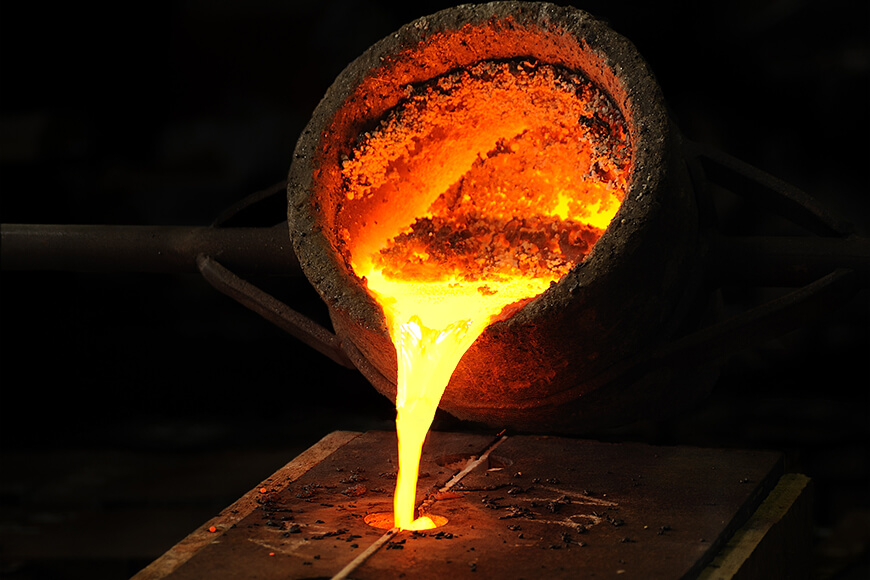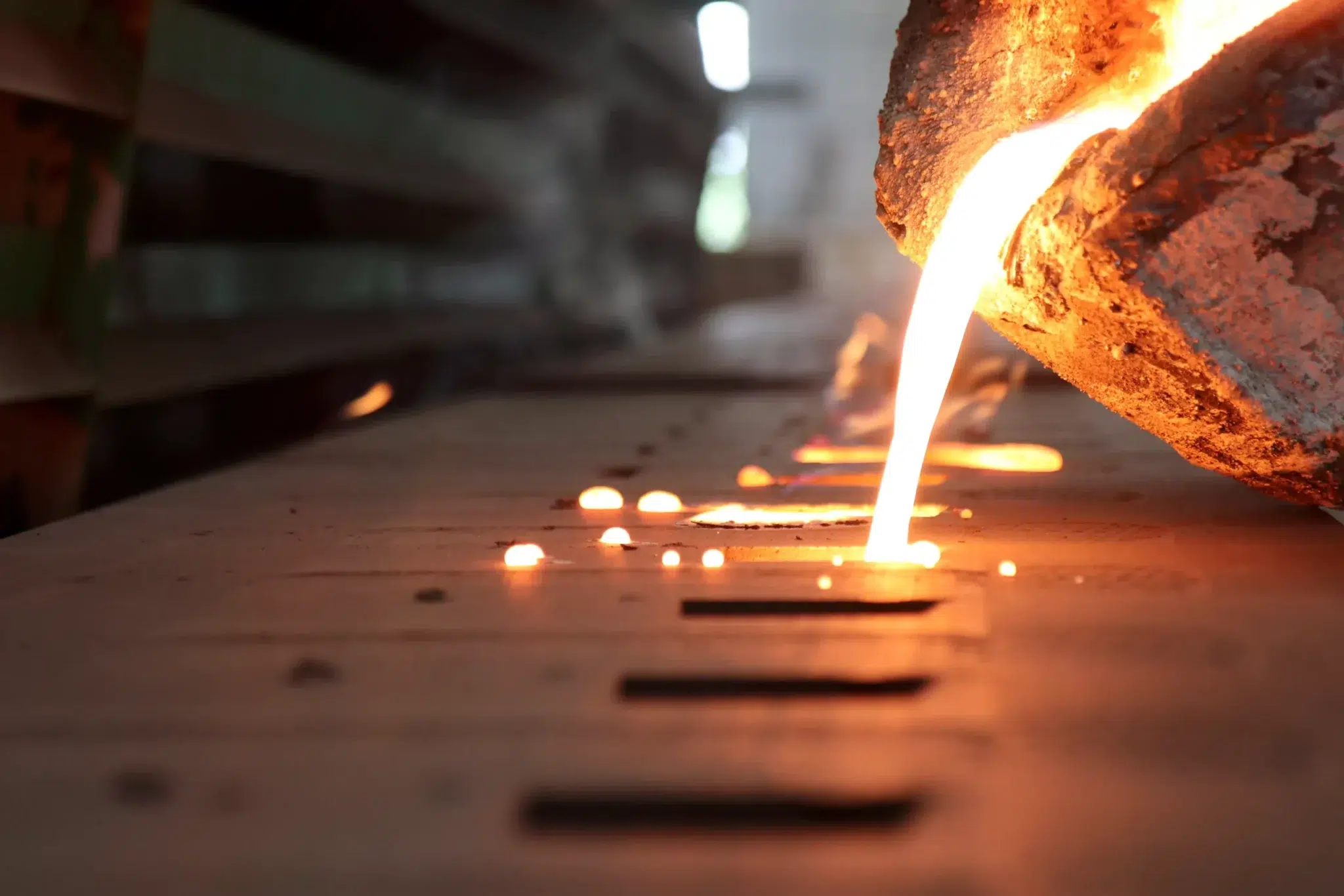Top 5 Errors to Avoid When Partnering With a Casting Foundry
Exploring the Important Role of Casting Foundry in Modern Manufacturing
Casting factories are essential in contemporary production, offering crucial elements across diverse industries. Casting Foundry. Their ability to create detailed, light-weight components satisfies the expanding needs for efficiency and top quality. Nevertheless, the landscape is evolving, affected by technological developments and sustainability worries. As these factories navigate chances and challenges, their future duty in production stays unpredictable. What methods will they utilize to adapt and flourish in this vibrant atmosphere?
The Basics of Casting: Comprehending the Process
Casting has been a basic production process for centuries, its principles stay essential to contemporary sector. This procedure entails putting a liquid material, typically steel, into a mold to create a certain form. The mold is created to create the wanted final product, which solidifies as it cools. Trick phases in casting consist of pattern making, mold creation, pouring, and ending up. Each phase calls for mindful attention to information, making sure that the end product fulfills high quality and dimensional criteria.
The versatility of Casting permits for the manufacturing of intricate geometries that would be impossible or difficult to attain via various other producing methods. Additionally, Casting can accommodate a variety of products, consisting of polymers and steels. This flexibility makes it a necessary strategy for markets ranging from automobile to aerospace, supporting innovation and effectiveness in the development of components that satisfy the needs of modern applications.
Sorts Of Casting Techniques and Their Applications
Casting strategies are varied, each tailored for details applications and material needs. Sand Casting is one of the oldest approaches, ideal for complex geometries and big parts, using sand molds. Financial investment casting, known for its precision, is excellent for elaborate styles and is typically used in aerospace and clinical industries. Pass away spreading, often utilized for high-volume production, enables fast manufacturing of smaller parts with great surface area finish, normally in light weight aluminum or zinc alloys. Covering Casting uses a balance in between both, offering great information and good toughness, making it popular in automotive applications. Long-term mold and mildew casting, made use of for non-ferrous metals, delivers a tighter dimensional resistance and better mechanical residential or commercial properties. Finally, centrifugal Casting works for creating cylindrical elements, usually located in pipes and tubes - Casting Foundry. Each strategy offers distinct purposes, highlighting the versatility and value of Casting in contemporary manufacturing
The Impact of Casting Factories on Sector Advancement
As sectors venture for higher efficiency and product high quality, the function of casting factories comes to be increasingly pivotal in driving advancement. These facilities work as the backbone for generating complicated parts throughout numerous fields, including auto, aerospace, and energy. By leveraging sophisticated Casting techniques and materials, foundries add to the growth of lighter, more powerful, and a lot more resilient items that satisfy evolving customer demands.

Furthermore, foundries help with using sustainable techniques, such as recycling metal and minimizing waste, which aligns with modern sector criteria for ecological duty. Ultimately, the innovative capacities of casting shops not only enhance making effectiveness but also move entire industries into a future defined by technical improvement and sustainability.

Challenges Facing Casting Foundries in a Modern Economic climate
While innovation proceeds to improve the manufacturing landscape, casting factories face a myriad of difficulties that intimidate their functional feasibility. One substantial problem is the raising competition from advanced production innovations, such as additive manufacturing, which can generate complex get rid of much less product waste. Furthermore, the varying rates of resources, especially metals, posture monetary risks, impacting cost predictability. Labor lacks better worsen these challenges, as skilled workers become important site harder to find and maintain amid an aging labor force. Furthermore, governing stress regarding exhausts and work environment security need factories to purchase costly upgrades, often straining limited resources. The demand for electronic improvement also looms huge, as lots of factories battle to adopt Market 4.0 innovations that improve effectiveness and information management. Jointly, these difficulties compel casting foundries to adapt promptly or run the risk of obsolescence in a progressively open market.
Sustainability Practices in Casting Foundries
Amidst the obstacles facing Casting factories, the fostering of sustainability methods has actually become a vital approach for improving operational resilience and competitiveness. Shops are increasingly concentrating on minimizing waste with effective source monitoring, recycling scrap steel, and utilizing eco-friendly products in their processes. The implementation of energy-efficient innovations is one more crucial element, as it aids reduced power intake and carbon emissions.
Furthermore, many foundries are embracing closed-loop systems to lessen water usage and reduce the environmental effect of procedures. Staff member training in lasting practices fosters a culture of ecological obligation, ensuring that all employee are participated in sustainability campaigns.
Integrating Modern Technology in Casting Processes
Integrating sophisticated technologies into casting procedures has actually come to be a pivotal consider driving efficiency and development within factories. Automation and robotics are progressively utilized to streamline production, lowering labor prices and lessening human mistake. Advanced software application for simulation and modeling allows designers to anticipate results and optimize styles before physical manufacturing starts. Furthermore, the incorporation of 3D printing innovation considerably improves the prototyping stage, assisting in rapid growth and decreasing preparations.
On top of that, real-time surveillance systems using IoT gadgets enable factories to track efficiency metrics and recognize prospective concerns early in the Casting process. This data-driven strategy not only boosts top quality control but additionally supports maintenance strategies that prevent costly downtimes. As a result, incorporating these innovations fosters an extra active production environment, allowing shops to react swiftly to market demands while preserving high requirements of quality and sustainability.
The Future of Casting Foundries in Production

In addition, the demand for high-performance and lightweight products in industries like aerospace and automobile will certainly drive innovation within factories. Cooperations between manufacturers and factories will likely increase, fostering an extra integrated supply chain that emphasizes rapid prototyping and customization. As digital improvement proceeds, shops may additionally leverage information analytics to enhance operations and predict maintenance demands, guaranteeing competitiveness. Inevitably, the future of casting factories pivots on their capacity to adapt to technological innovations and market demands while keeping high quality and cost-effectiveness.
Regularly Asked Questions
What Materials Are Commonly Used in Casting Foundries?
The products frequently used in casting foundries consist of steels such as aluminum, iron, bronze, and steel, along with different alloys. In addition, sand, resin, and ceramic are often utilized for mold and mildews and core production.
Just How Do Casting Foundries Make Certain High Quality Control in Production?
Casting shops carry out strenuous quality control actions, including normal inspections, standardized testing, and adherence to sector certifications. These techniques assure that each item meets specified tolerances and efficiency criteria, thereby maintaining high levels of integrity and customer contentment.
What Are the Precaution in Casting Foundries?
Safety and security measures in casting factories include the use of personal safety equipment, appropriate air flow systems, regular devices maintenance, employee training programs, and adherence to security laws to minimize dangers related to molten steel handling and equipment operation.
How much time Does the Casting Process Commonly Take?
The Casting process usually takes a number of hours to several days, depending on factors such as the intricacy of the design, the products made use of, and the cooling time required for the cast components to solidify effectively.
What Is the Function of Engineers in Casting Foundries?
Engineers in casting shops manage style, procedure optimization, and high quality control. They guarantee that materials satisfy requirements, troubleshoot production issues, and implement ingenious methods, ultimately contributing to effectiveness and the effective manufacture of metal elements.
Casting shops are crucial in modern-day production, giving necessary components across diverse industries. While innovation proceeds to improve the production landscape, casting shops face a myriad of obstacles that endanger their functional viability. Amidst the obstacles challenging Casting foundries, the adoption of sustainability methods has emerged as a vital discover this method for improving functional durability and competitiveness. In enhancement, real-time tracking systems using IoT gadgets make it possible for foundries to track performance metrics and recognize prospective issues early in the Casting process. The products generally used in casting factories include steels such as aluminum, steel, bronze, and iron, along with numerous alloys.